April 2025
The global e-bike motors market is forecasted to expand from USD 8.33 billion in 2025 to USD 20.96 billion by 2034, growing at a CAGR of 13.96% from 2025 to 2034.
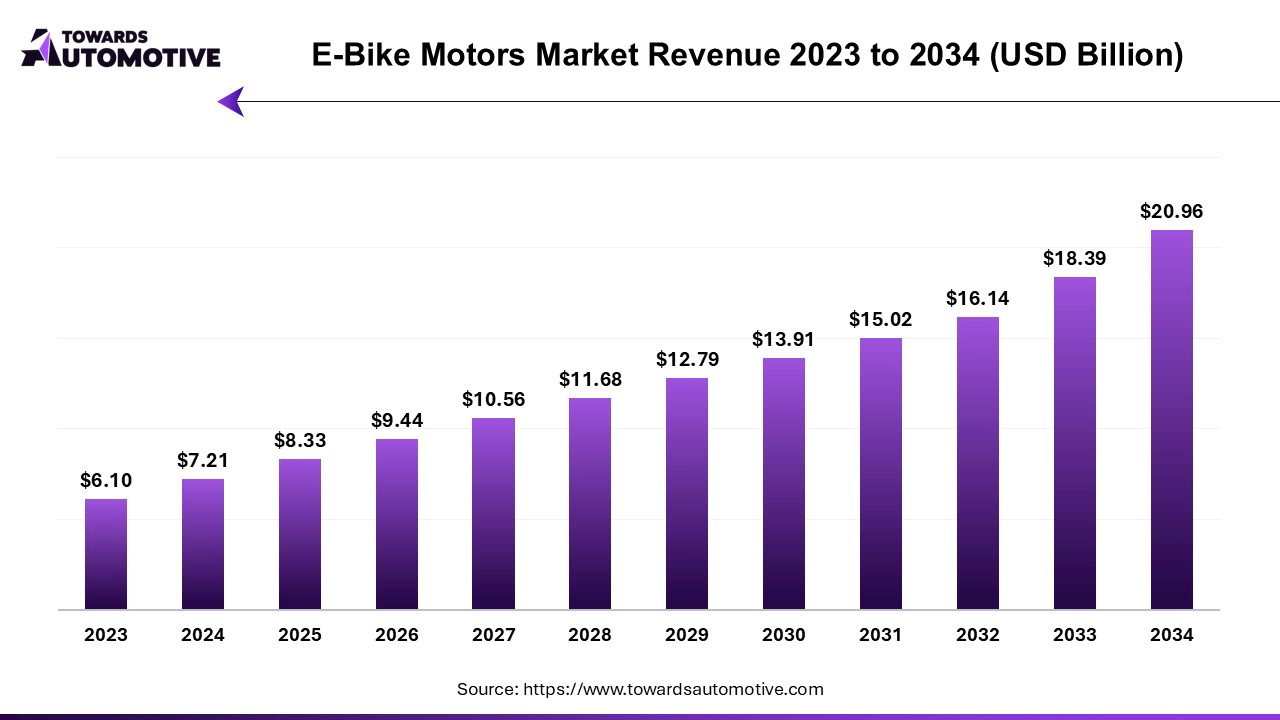
Unlock Infinite Advantages: Subscribe to Annual Membership
The e-bike motors market is experiencing significant growth, driven by increasing consumer demand for sustainable transportation solutions and advancements in technology. As urban populations rise and traffic congestion becomes a critical issue, e-bikes are emerging as an efficient alternative to traditional vehicles, offering an eco-friendly means of commuting. The market is characterized by a diverse range of motor types, including hub motors and mid-drive systems, each designed to cater to specific riding preferences and terrains.
Technological innovations, such as enhanced battery efficiency, improved motor performance, and smart connectivity features, are further propelling market expansion. These advancements not only enhance the overall riding experience but also extend the range and usability of e-bikes, making them more attractive to consumers. Additionally, supportive government policies and incentives promoting electric mobility are creating a favorable environment for market growth.
The e-bike motors market is also witnessing increased interest from Original Equipment Manufacturers (OEMs), who are investing in research and development to deliver high-quality, reliable products. As the focus on health and wellness grows, e-bikes provide a solution that combines physical activity with the convenience of electric assistance. Overall, the e-bike motors market is poised for continued expansion as consumers increasingly prioritize sustainable, efficient, and enjoyable modes of transportation.
Artificial Intelligence (AI) plays a transformative role in the e-bike motors market by enhancing performance, efficiency, and user experience. AI technologies enable the development of smart e-bike systems that can monitor and optimize motor performance in real time, improving the overall riding experience. For instance, AI algorithms can analyze data from various sensors to adjust motor output based on terrain, rider behavior, and battery status, ensuring optimal power delivery and energy efficiency. This adaptability enhances the e-bike's performance across different riding conditions, from flat urban roads to steep hills.
Moreover, AI-powered systems can facilitate predictive maintenance by monitoring motor health and performance metrics. This capability allows manufacturers and users to detect potential issues before they lead to significant problems, reducing downtime and maintenance costs.
Additionally, AI contributes to user personalization by learning individual rider preferences over time. By analyzing riding patterns, AI can suggest optimal settings for pedal assist levels and other configurations, tailoring the experience to each user’s needs.
Furthermore, AI can enhance the integration of e-bikes with smart city infrastructures, enabling features such as route optimization, traffic management, and real-time navigation assistance. Overall, AI's role in the e-bike motors market is pivotal in driving innovation, improving efficiency, and elevating the user experience, making e-bikes a more appealing option for consumers.
Rising e-commerce sales are significantly driving the growth of the e-bike motors market by making e-bikes more accessible to a global audience. Online platforms allow consumers to explore a wide range of e-bike options, compare prices, and read customer reviews, all from the convenience of their homes. This ease of access accelerates purchasing decisions and helps e-bike manufacturers and retailers reach a broader customer base, particularly in regions where brick-and-mortar stores may be limited. Additionally, e-commerce platforms provide detailed product specifications, making it easier for consumers to find e-bikes that meet their specific needs, such as motor power, range, and features.
The direct-to-consumer sales model, commonly adopted by e-bike manufacturers through online channels, also eliminates the need for intermediaries, reducing costs and increasing affordability. Furthermore, e-commerce allows for faster market penetration of new products and technologies, ensuring that the latest advancements in e-bike motor technology are quickly made available to consumers. The growing trend of online sales, particularly in response to the pandemic, has further boosted the market as consumers increasingly turn to digital platforms for their purchases. Overall, the rise in e-commerce is a key driver of the e-bike motors market, expanding its reach and accelerating growth.
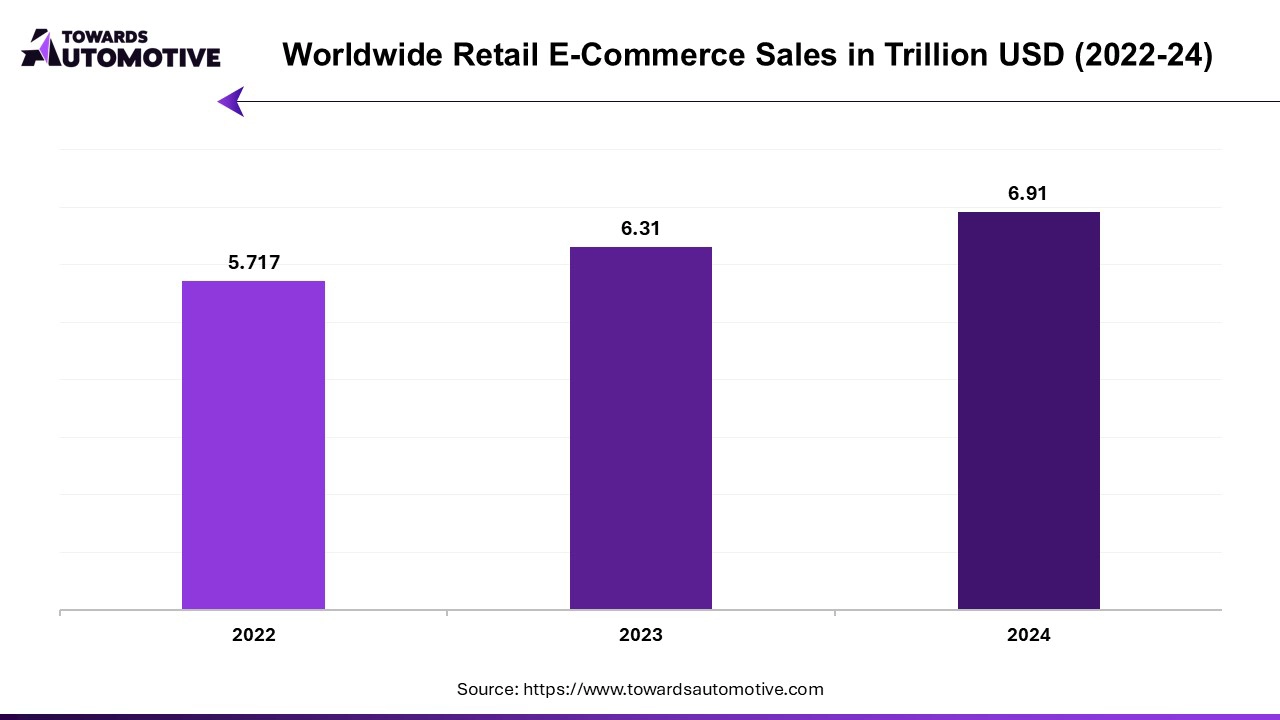
The e-bike motors market faces several restraints that hinder its growth. High initial costs associated with e-bikes, particularly those with advanced motor systems, make them less accessible to cost-conscious consumers. Additionally, the limited battery range and long charging times can deter potential buyers, especially for long-distance commuters. Infrastructure challenges, such as a lack of dedicated bike lanes and charging stations in many regions, further limit widespread adoption. Moreover, regulatory inconsistencies regarding e-bike classifications and motor power restrictions across different regions create hurdles for manufacturers, affecting market expansion and standardization.
The advancement of efficient motors is creating significant opportunities in the e-bike motors market by improving performance, range, and overall user experience. New motor technologies are becoming lighter, more powerful, and more energy-efficient, enabling e-bikes to travel longer distances on a single charge while maintaining high performance. These motors offer better power-to-weight ratios, which is crucial for riders looking for both agility and speed, particularly in urban commuting environments. As a result, these advancements make e-bikes a more attractive alternative to traditional bicycles and even cars for short-to-medium distance travel.
Efficient motors also reduce the strain on battery life, extending the operational range of e-bikes and reducing the need for frequent charging. This is particularly appealing for long-distance commuters and recreational riders who seek reliability and convenience. Moreover, quieter motor operations and smoother acceleration provided by these advanced motors enhance the overall riding experience, further driving consumer interest.
In addition, the development of mid-drive motors and other advanced motor systems provides better weight distribution and improved handling, making e-bikes more versatile and suitable for various terrains. These advancements are opening new market segments, including mountain e-bikes and cargo e-bikes, creating a broader consumer base and new growth opportunities in the e-bike motors market.
The upto 250W segment held the largest share of the market. The demand for e-bike motors rated up to 250 W is significantly driving growth in the e-bike motors market, particularly in regions with specific regulatory frameworks regarding electric bicycles. Motors in this power range are often seen as the ideal balance between performance and compliance with regulations that classify e-bikes as bicycles rather than motor vehicles. In many European countries, for instance, a motor output of 250 W is the maximum allowed for e-bikes to retain their classification, enabling riders to enjoy the benefits of electric assistance without needing a license or registration.
These motors offer sufficient power for various terrains, including urban environments and gentle hills, making e-bikes accessible to a broader audience. The lightweight nature of 250 W motors contributes to the overall efficiency and portability of e-bikes, enhancing their appeal for daily commuters and recreational riders alike. Additionally, advancements in motor technology have improved the efficiency and responsiveness of 250 W motors, providing a smooth and enjoyable riding experience. As consumer awareness of e-bikes grows and the market continues to expand, the popularity of motors up to 250 W is expected to rise, further propelling the growth of the e-bike motors market.
The hub motor segment led the industry. Hub motors are a crucial driver of growth in the e-bike motors market, significantly enhancing the performance and appeal of electric bicycles. Positioned within the wheel hub, these motors offer several advantages, including efficient power delivery and ease of installation. Unlike mid-drive motors, which require more complex mechanical configurations, hub motors simplify the e-bike design, making them accessible to manufacturers and consumers alike. This simplicity allows for more streamlined production processes and reduced costs, contributing to the overall affordability of e-bikes.
Moreover, hub motors provide a smooth and quiet riding experience, which is increasingly important for urban commuters. The direct connection between the motor and wheel ensures instant acceleration and a more effortless ride, attracting a diverse range of riders from casual cyclists to daily commuters. Additionally, advancements in hub motor technology, such as improved torque and energy efficiency, have enhanced their performance, making them suitable for various terrains and riding conditions.
As more consumers seek convenient and reliable transportation solutions, the appeal of hub motors continues to grow. Their integration into a wide range of e-bike models further solidifies their position in the market, driving the overall growth of the e-bike motors segment.
The OEM segment held a dominant share of the market. The Original Equipment Manufacturer (OEM) segment plays a pivotal role in driving the growth of the e-bike motors market by fostering innovation, enhancing product quality, and expanding market reach. OEMs are crucial in developing e-bikes, providing manufacturers with advanced motor technologies and reliable components that meet consumer demands for performance and efficiency. As the demand for e-bikes surges, OEMs respond by investing in research and development to create high-performance motors that cater to diverse riding preferences, from urban commuting to off-road adventures.
Furthermore, OEM partnerships enable bicycle manufacturers to streamline their supply chains and reduce production costs, allowing for competitive pricing in the market. This collaboration also encourages the adoption of standardized components, which simplifies the integration of e-bike motors into various bike designs and enhances compatibility across models.
Additionally, OEMs often play a significant role in marketing and brand development, promoting the benefits of e-bikes and boosting consumer awareness. As governments and municipalities worldwide increasingly support sustainable transportation initiatives, OEMs are well-positioned to capitalize on this momentum by providing high-quality e-bike solutions that align with changing consumer preferences. Ultimately, the OEM segment's focus on innovation and quality is driving significant growth in the e-bike motors market, positioning e-bikes as a preferred choice for environmentally conscious consumers.
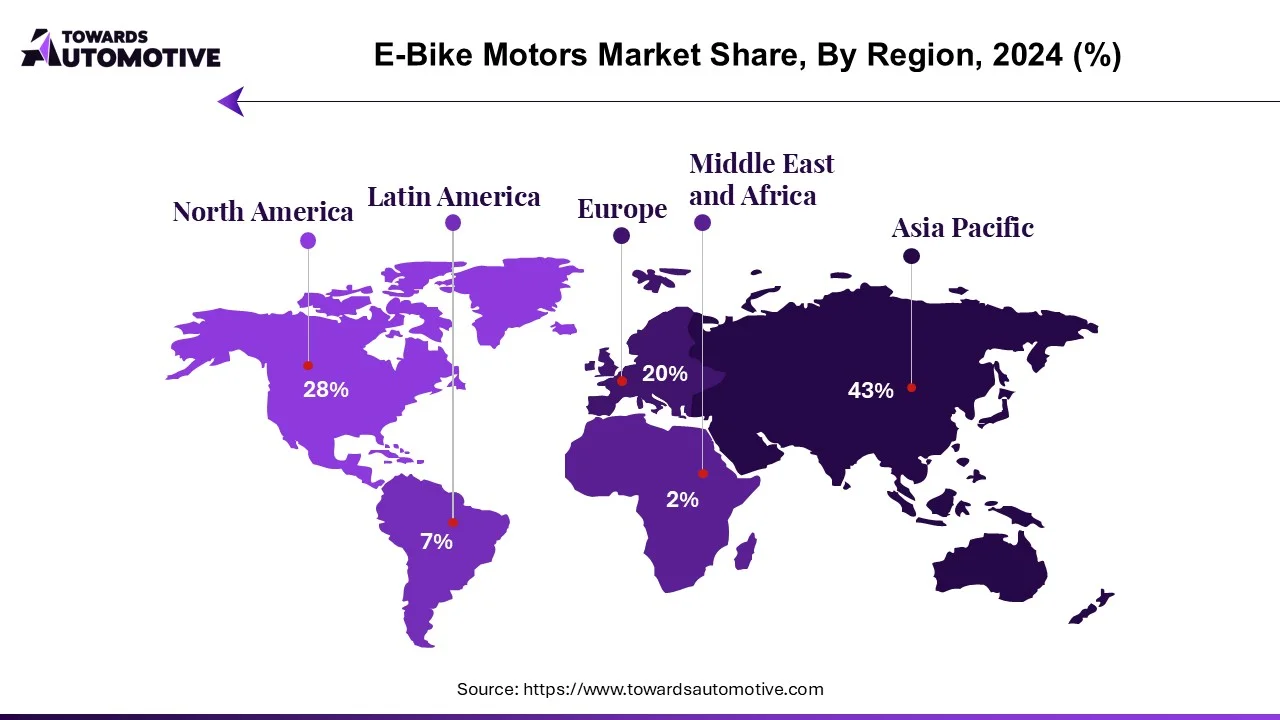
North America dominated the e-bike motors market. Urbanization, technological advancements, and government initiatives and subsidies are significant drivers of growth in the e-bike motors market in North America. As urban areas expand and populations increase, cities face growing traffic congestion and environmental concerns. E-bikes offer a practical solution for urban commuting, allowing individuals to navigate through crowded streets efficiently while reducing their carbon footprint. This increasing urbanization creates a heightened demand for sustainable transportation options, further boosting the e-bike market.
Technological advancements play a crucial role in enhancing e-bike performance and user experience. Innovations in motor efficiency, battery technology, and smart connectivity are making e-bikes more appealing to consumers. Improved battery life and faster charging times alleviate concerns about range, enabling riders to travel longer distances without interruptions. These advancements not only attract new customers but also encourage existing riders to upgrade their e-bikes.
Furthermore, government initiatives and subsidies are instrumental in promoting e-bike adoption. Many states and municipalities offer financial incentives for purchasing e-bikes, making them more accessible to a broader audience. These programs are often part of larger sustainability initiatives aimed at reducing traffic congestion and promoting clean transportation. Together, these factors create a favorable environment for the growth of the e-bike motors market in North America, positioning e-bikes as a viable alternative to traditional vehicles.
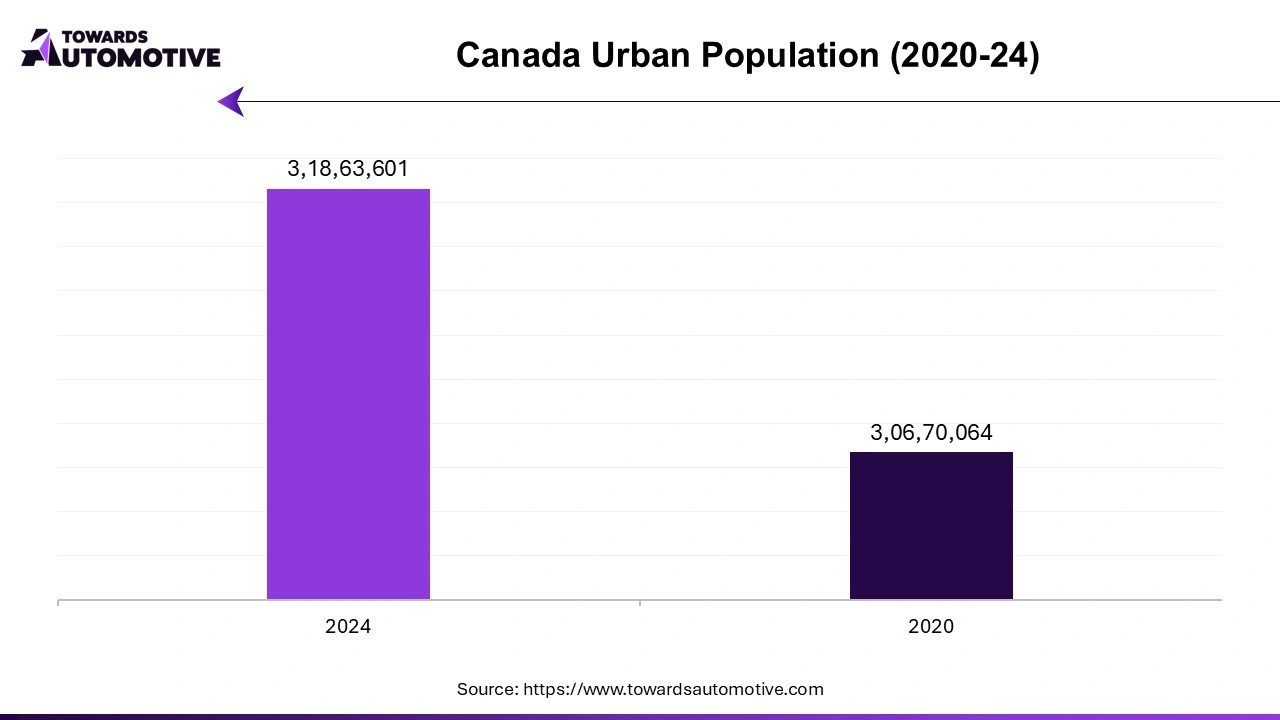
Europe is expected to grow with the highest CAGR during the forecast period. Growing health consciousness, rising environmental awareness, and increasing traffic congestion are pivotal factors driving the growth of the e-bike motors market in Europe. As individuals become more health-conscious, cycling is increasingly recognized as an effective form of exercise that promotes physical fitness and overall well-being. E-bikes, which offer the benefits of cycling while reducing the physical strain associated with traditional bikes, are particularly appealing to those seeking a balanced approach to fitness and convenience. This shift towards healthier lifestyles has contributed to the rising popularity of e-bikes among a diverse range of consumers.
Simultaneously, environmental awareness has reached new heights in Europe, with consumers prioritizing sustainable transportation solutions to combat climate change and reduce carbon emissions. E-bikes are viewed as a green alternative to cars, offering a low-emission mode of transport that aligns with the growing emphasis on eco-friendly practices.
Moreover, escalating traffic congestion in urban areas has made traditional commuting increasingly frustrating and time-consuming. E-bikes provide a practical solution, allowing commuters to bypass traffic and reach their destinations quickly. This combination of health benefits, environmental considerations, and practical commuting solutions is fueling the demand for e-bike motors in Europe, positioning them as a preferred choice for modern transportation.
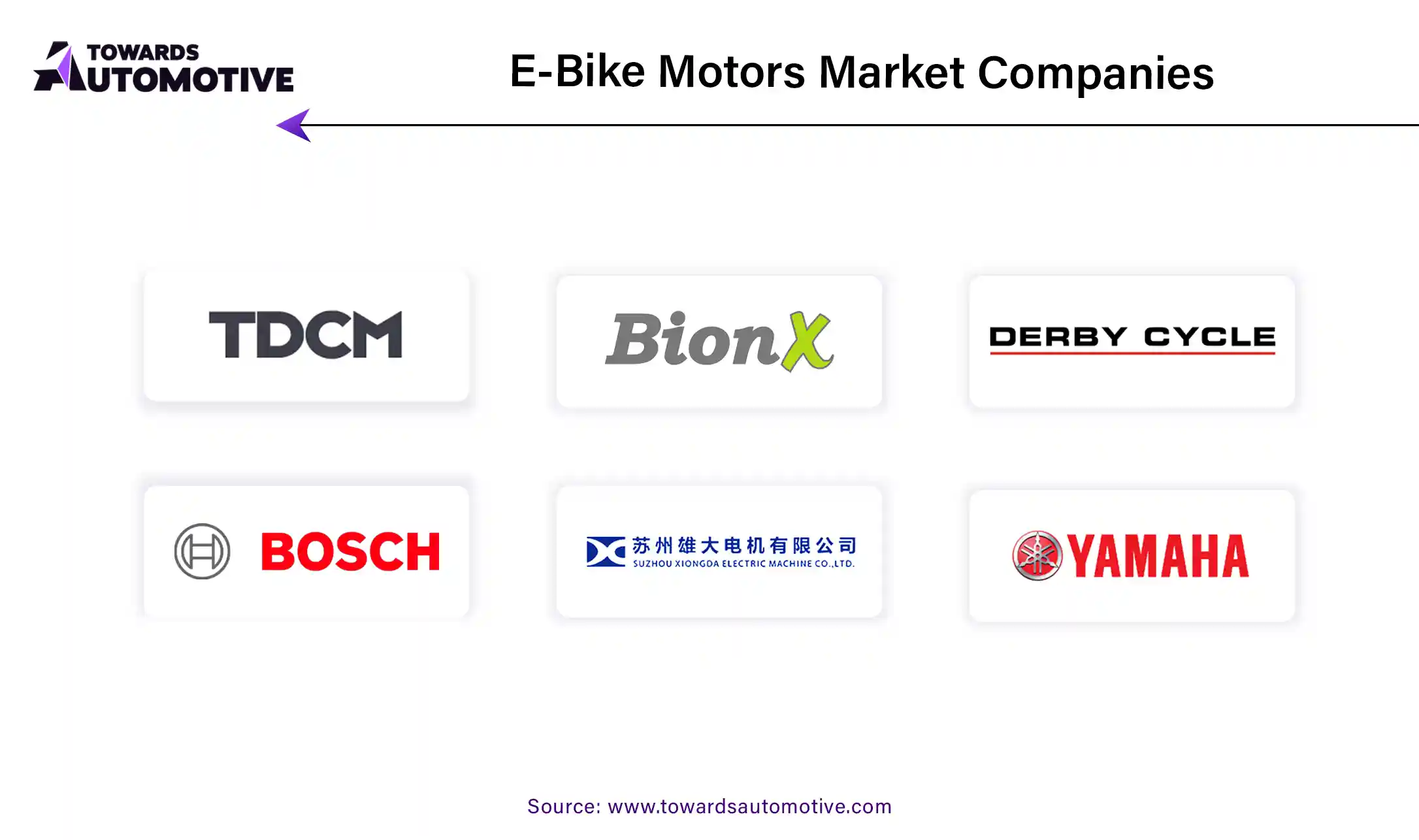
By Type
By Application
By Product
By Region
April 2025
April 2025
April 2025
April 2025
We offer automotive expertise for market projections and customizable research, adaptable to diverse strategic approaches.
Contact Us